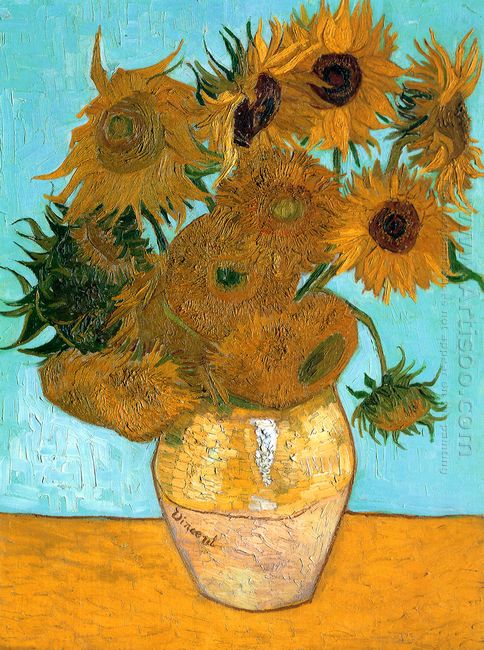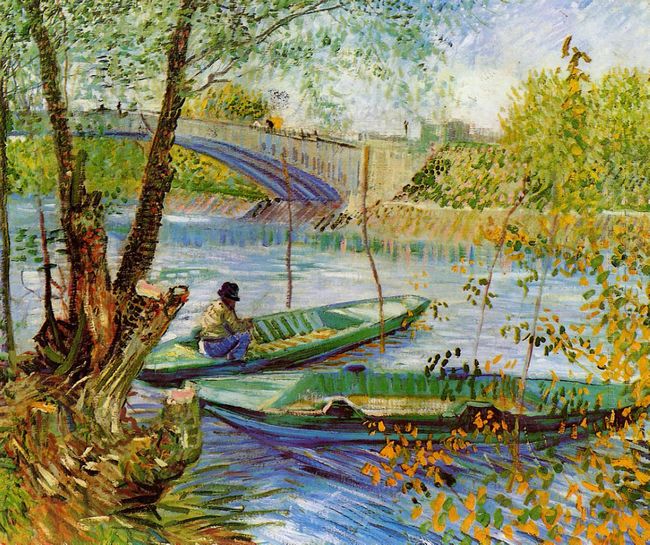Starry Night by Vincent van Gogh (Painted in an Asylum at Saint-Remy in 1889)has risen to the peak of artistic achievements. Although Van Gogh sold only one painting in his life, the aftermath of his work is enormous. Starry Night is one of the most well known images in modern culture as well as being one of the most replicated and sought after prints. From Don McLean's song 'Vincent' (Starry, Starry Night) (Based on the Painting), to the endless number of merchandise products sporting this image, it is nearly impossible to shy away from this amazing painting.
One may begin to ask what features within the painting are responsible for its ever growing popularity. There are actually several main aspects that intrigue those who view this image, and each factor affects each individual differently. The aspects will be described below:
- 1. There is the night sky filled with swirling clouds, stars ablaze with their own luminescence, and a bright crescent moon. Although the features are exaggerated, this is a scene we can all relate to, and also one that most individuals feel comfortable and at ease with. This sky keeps the viewer's eyes moving about the painting, following the curves and creating a visual dot to dot with the stars. This movement keeps the onlooker involved in the painting while the other factors take hold.
- 2. Below the rolling hills of the horizon lies a small town. There is a peaceful essence flowing from the structures. Perhaps the cool dark colors and the fiery windows spark memories of our own warm childhood years filled with imagination of what exists in the night and dark starry skies. The center point of the town is the tall steeple of the church, reigning largely over the smaller buildings. This steeple casts down a sense of stability onto the town, and also creates a sense of size and seclusion.
- 3. To the left of the painting there is a massive dark structure that develops an even greater sense of size and isolation. This structure is magnificent when compared to the scale of other objects in the painting. The curving lines mirror that of the sky and create the sensation of depth in the painting. This structure also allows the viewer to interpret what it is. From a mountain to a leafy bush, the analysis of this formation is wide and full of variety.






